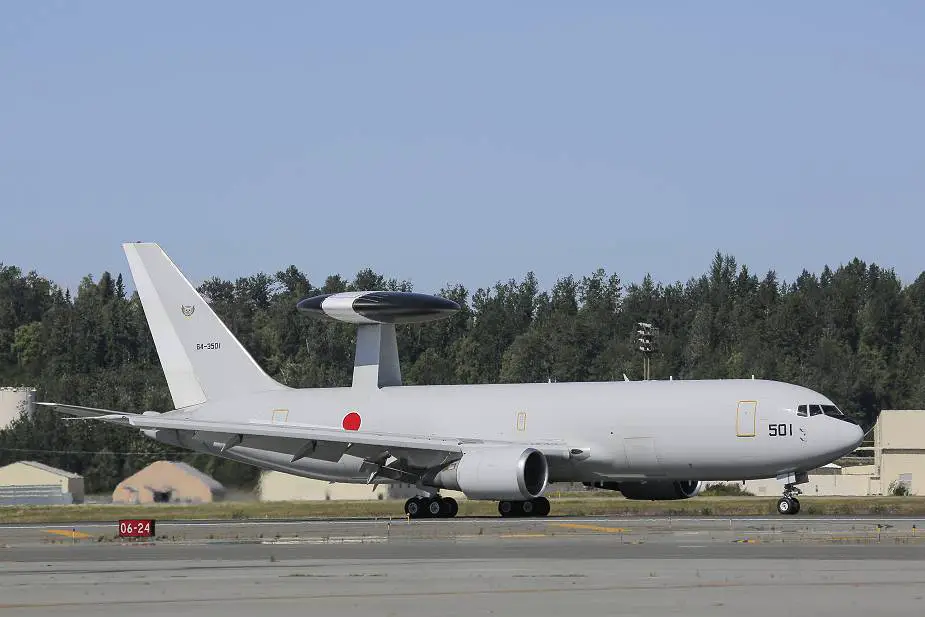According to contract published by the U.S. DoD (Department of Defense) on June 23, 2020, The Boeing Co., Oklahoma City, Oklahoma; San Antonio, Texas; and Hamamatsu, Japan, has been awarded an $8,471,689 firm-fixed-price, cost-plus-fixed-fee and cost-plus-incentive-fee modification (P00005) to contract FA8730-18-C-0001 for the Japan Airborne Warning and Control System (AWACS) mission computing upgrade (MCU) installation and checkout (I&CO) and Automatic Dependent Surveillance Broadcast Out (ADS-B Out).
Follow Air Recognition on Google News at this link
 A Japan Air Self-Defense Force E-767 Airborne Warning and Control System aircraft taxis before takeoff on Joint Base Elmendorf-Richardson, Alaska, Aug. 14, 2015. (Picture source U.S. air Force)
A Japan Air Self-Defense Force E-767 Airborne Warning and Control System aircraft taxis before takeoff on Joint Base Elmendorf-Richardson, Alaska, Aug. 14, 2015. (Picture source U.S. air Force)
The contract modification is to upgrade its fleet of four aircraft with the ADS-B Out capability. ADS-B Out is a software and hardware update to the Raytheon APX-119 transponder that includes the addition of a Global Positioning System (GPS) card. Under the E-767 AWACS I&CO program, the GPS card is to be installed within the four aircraft and updating the three ground support facilities.
Work will be performed in Oklahoma City, Oklahoma; San Antonio, Texas; and Hamamatsu, Japan, and is expected to be completed Dec. 23, 2023. This modification involves Foreign Military Sales (FMS) to the Japan Air Self-Defense Force.
The AWACS is an Airborne Warning and Control System aircraft based on a Boeing E-767. It was designed in response to the Japan Air Self-Defense Force's requirements and is essentially the Boeing E-3 Sentry's surveillance radar and air control system installed on a Boeing 767-200.
The procurement of E-767 by the Japanese government was split into two stages. The first stage was the procurement of an unmodified 767 aircraft by the Japanese government through a trading company, Itochu Corporation. In the second stage, the aircraft were modified to carry AWACS equipment by US and Japanese contractors supervised by the U.S. government under Foreign Military Sales rules.
The AWACS radar provides a 360° view of the area. At operating altitudes, it can detect targets more than 320km away. Targets are separated and individually managed and displayed on situational displays.
The 767 AWACS aircraft can fly at a maximum speed of 800km/h. The range and service ceiling of the aircraft are 10,370 km and 12,222 m respectively. The endurance of the aircraft is 13 hours at 300 nm radius. The aircraft weighs 85,595 kg, while the maximum take-off weight is 175,000 kg.
















